Ever wonder where your coffee beans come from? We’ve compiled a list of the top countries with the highest coffee production, and what makes theirs stand out.
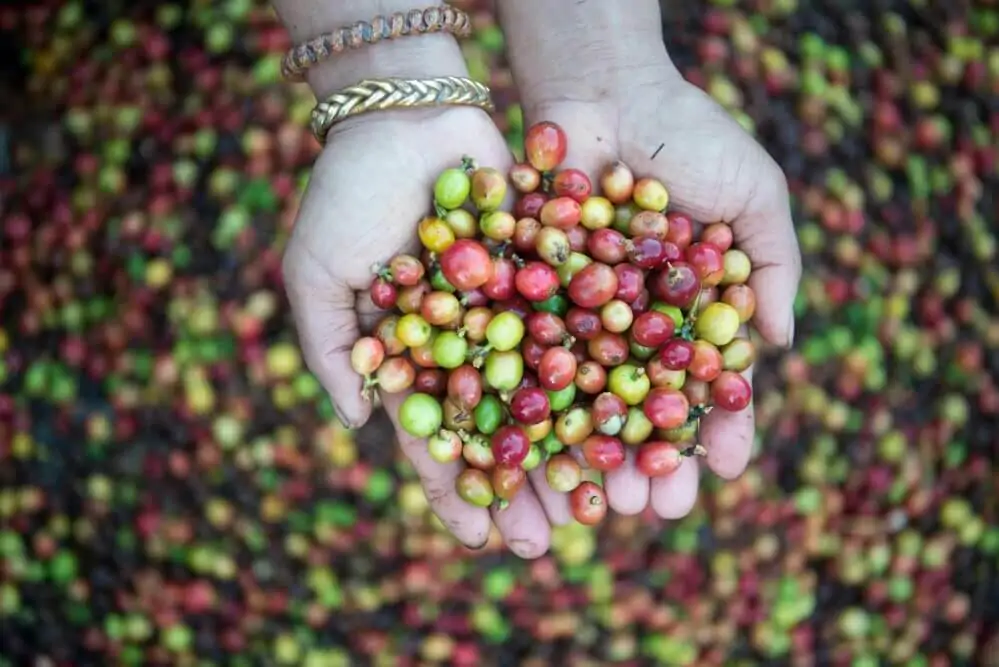
Coffee has its origins in the horn of Africa, in the Ethiopian region. According to legend, a shepherd boy named Kaldi noticed that his goats didn’t want to sleep at night after eating the bright red berries of a certain plant.
Soon, he and other people were eating the berries for energy themselves. Eventually, they learned to roast the seeds from these berries, grind them up and steep them in water, and the first cup of coffee was born.
Since then, coffee production has spread across the world, and specialty coffee shops regularly offer varieties from different continents. Here are the 20 top coffee-producing countries, ranked.
- 1. Brazil
- 2. Vietnam
- 3. Colombia
- 4. Indonesia
- 5. Ethiopia
- 6. India
- 7. Honduras
- 8. Uganda
- 9. Mexico
- 10. Guatemala
- 11. Peru
- 12. Nicaragua
- 13. China
- 14. Côte d'Ivoire
- 15. Costa Rica
- 16. Kenya
- 17. Papua New Guinea
- 18. Tanzania
- 19. El Salvador
- 20. Ecuador
- The Last Word In Countries Coffee Production
- FAQs About Countries Coffee Production
1. Brazil
The South American country of Brazil tops the list, producing 61.6 million 60-kilogram bags of coffee in 2020, about 70% of that being the Arabica variety.
Brazil‘s large tropical landmass is perfect for growing the delicate Arabica plants, and their location close to the United States, the largest per capita consumer of coffee in the world, allows them to sell much of their crop for excellent prices. Brazilian coffee has a sweet, nutty flavor with very little acidity.
2. Vietnam
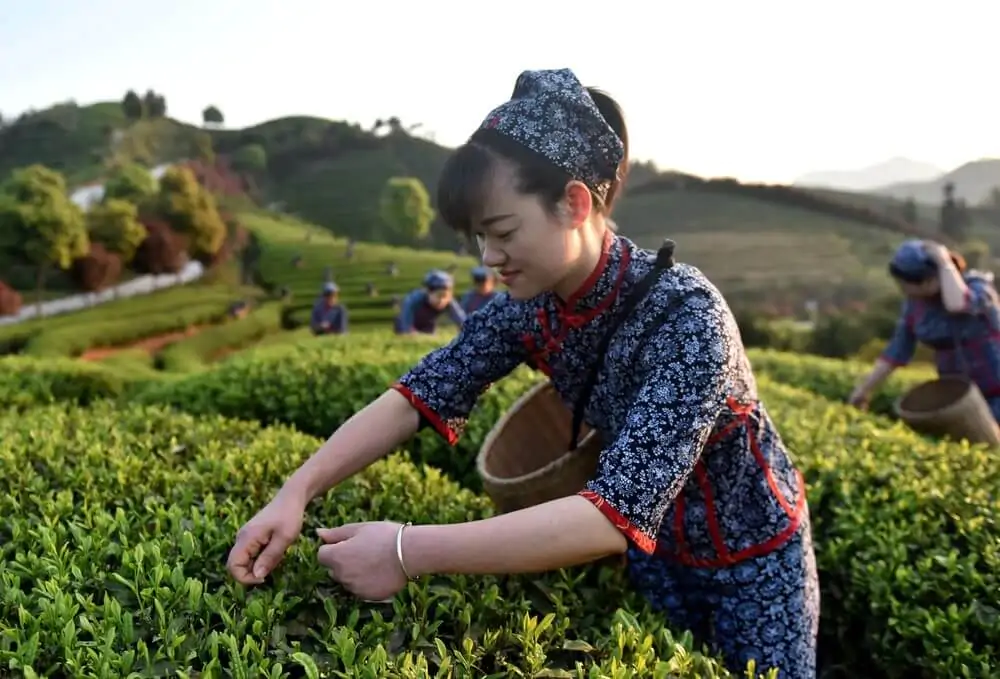
Vietnam has been involved in coffee production since the early 20th Century, mostly through the influence of the French, who occupied Vietnam for decades. More than 95% of the coffee they produce today is of the Robusta variety.
Coffee cultivation has waxed and waned for decades due to war and political instability, but it continues to be a vitally important crop for much of the country.
3. Colombia
One of the most popular types of coffee in the U.S. is that of Colombian origin. The mascot for the National Federation of Coffee Growers in Colombia, Juan Valdez, is an iconic figure in American culture and is widely recognized by millions of Americans of all ages.
Coffee cultivation was first brought to Colombia and its neighbor Venezuela by Jesuit missionaries in the late 1700s and spread quickly due to the favorable climate. Most Colombian coffee is considered to have a mild, well-balanced flavor. The majority of coffee produced in the area is Arabica coffee.
4. Indonesia
Coffee production in Indonesia began in the early Dutch colonial period, around the late 1600s. Indonesia has an ideal climate and geography for growing coffee, and the Dutch took advantage of it. It produces more coffee than any other country in Asia except for Vietnam.
About 75% of their yearly crop are Robusta beans, while the remaining 25% are Arabica beans, mostly grown in the region of West Timor. Indonesian coffee is known for its low acidity and strong body, so it’s often blended with higher acid coffees from Central America for a robust taste.
Indonesia is probably most famous for kopi luwak, also called civet coffee in English. It’s a unique varietal that is created when a certain species of wild cat eats raw coffee cherries, ferments them slightly in their intestines, and then passes them out as feces, after which they are collected. It’s one of the most expensive coffee varieties in the world.
5. Ethiopia
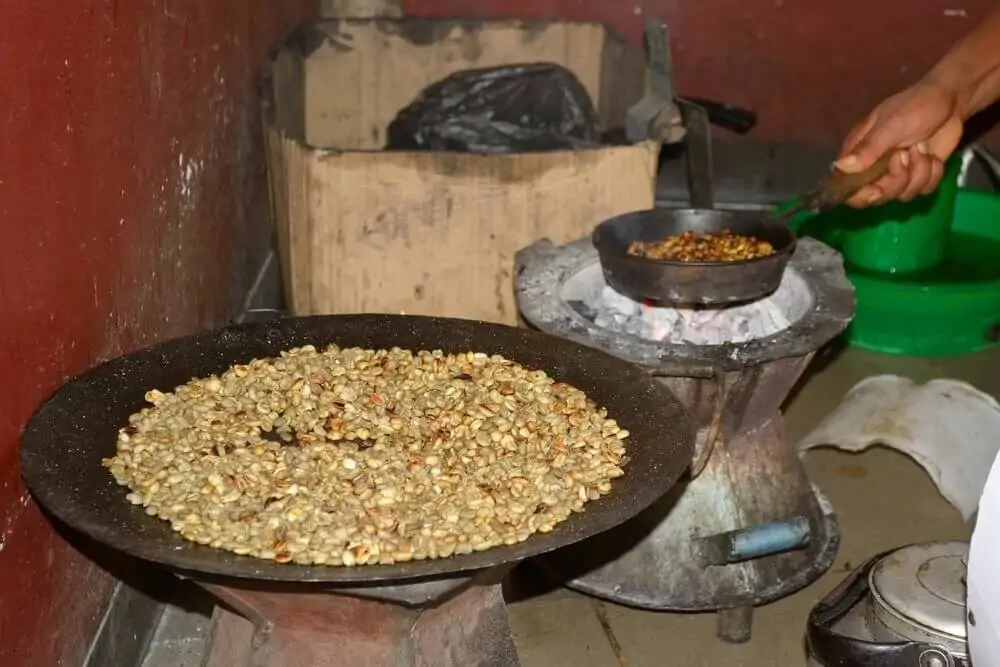
The origins of coffee cultivation lie in Ethiopia, where it’s been consumed since medieval times. The original coffee plant, Coffea arabica, is indigenous to the area and is still consumed by residents as part of an important cultural ceremony. From Ethiopia coffee consumption spread across the Arabic world, first being commercially produced in Yemen but remaining part of Traditional Ethiopian culture.
Today, the country exports around 200,000 metric tons of coffee every year and produces more coffee than any other African country. Their neighbor, Kenya, also produces coffee but on a much smaller scale.
6. India
Coffee producers in India are mostly situated in the southern half of the country, where the coffee is grown in unique shade conditions and is considered to be some of the finest in the world. Both Arabica and Robusta are grown in the area.
Indian coffee tends to have flavors similar to Indonesian coffee, with a full-bodied but slightly acidic flavor. In India, it’s commonly brewed very dark and mixed with milk and sugar, while Westerners often prefer it black.
7. Honduras
Honduras currently holds about 5% of the world’s coffee market. Hondurans have been growing it for a long time, since the end of the 19th Century, but only recently have they begun to really focus on it. In the last decade, they’ve become the top coffee-growing country in Central America.
The Honduran coffee industry mostly grows Arabica varietals. The government has built schools and other infrastructure to teach younger Hondurans growing methods and quality control concepts, which has caused many young people to enter into the industry. Coffee production in Honduras is expected to soar in the next two decades because of these efforts.
8. Uganda
Uganda is the second largest coffee producer on the African continent, only slightly behind Ethiopia. They mostly produce Robusta beans, because the Coffea canephora plant, which produces the beans, is native to Uganda.
Wild varieties can still be found in the Ugandan mountains. However, Arabica beans are making up a growing percentage of their yearly yield.
High-quality Ugandan coffee tends to have a clean, fruity taste and a distinctive aroma. Programs to increase the amount of coffee grown in the area and make it a top coffee-producing region have been successful so far, and their exports have increased significantly in the last decade.
9. Mexico
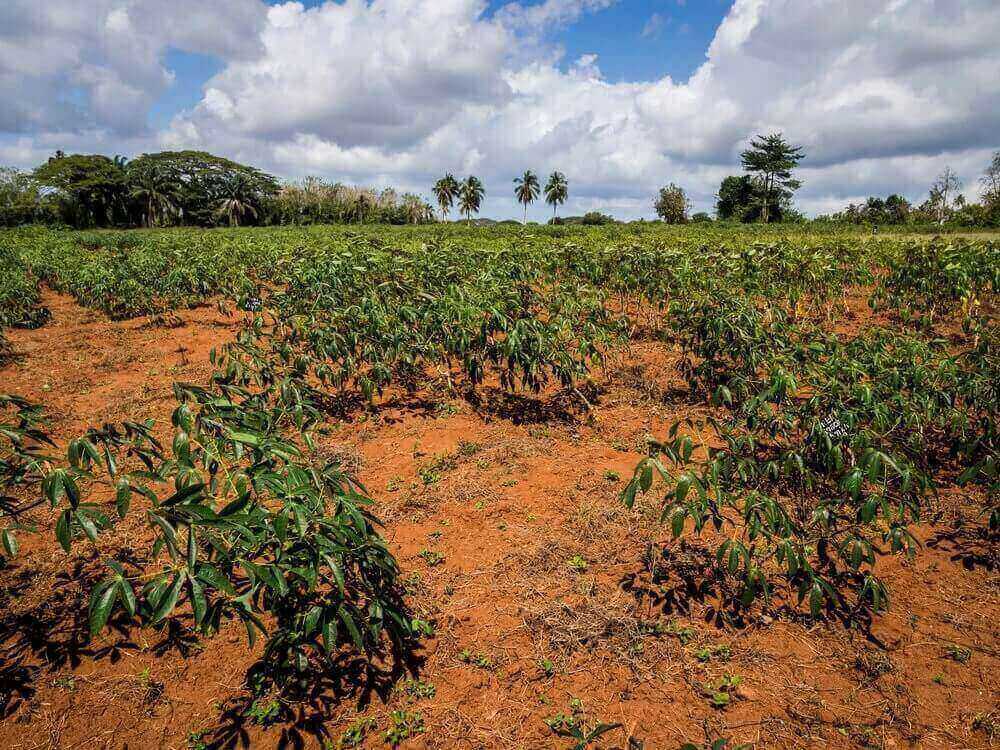
Mexico is the world’s largest producer of organically grown coffee. Their coffee industry is centered on their southern border with Guatemala, where they grow mostly excellent-quality Arabica beans.
Coffee production began in Mexico in the early 1800s, but it wasn’t until almost a century later that they began to export large amounts of it. They are the majority exporter of coffee bound for the United States, and Mexican coffee is popular here for its slightly fruity, acidic flavor and mid-price range.
10. Guatemala
Guatemala has an ideal climate for coffee production. But because of its small geographic size, it cannot compete with countries that have much larger landmasses available like Brazil or India.
They make up for it with the quality of their coffee; almost 98% of it is shade-grown, and it’s described as having a rich, almost chocolatey flavor with a slight sweetness to it. Coffee is grown across the entirety of Guatemala, from the northern Mexico border to the southern border with Honduras and El Salvador.
11. Peru
Most of the coffee produced in Peru is Arabica varietals. The Eastern slopes of the Andes Mountains offer perfect conditions to produce high-quality shade-grown coffee, which is also grown in small amounts in neighboring Bolivia.
Peruvian coffee has a reputation for having a very balanced taste, with a moderate body, moderate acidity, and a sweet, mellow finish.
12. Nicaragua

Coffee was introduced to Nicaragua during the Victorian era and has been their primary export for almost a century, providing the country with $500 million in exports and over 200,000 jobs. Most of it is exported to Europe—especially Italy— where its complex flavor is particularly prized and sells for a higher price than in the States.
The taste of Nicaraguan coffee can vary from a bittersweet chocolate taste to a light citrusy flavor. Most Nicaraguan beans come from Arabica plants.
13. China
The modern cultivation of coffee in China began very late, not until 1998 when the World Bank and the U.N. began a program to introduce coffee cultivation to the region. Nearly all Chinese coffee is grown in the Yunnan Province, where high-grade Arabica varieties dominate.
Chinese coffee has a light, clean taste with a hint of acidity, and is sometimes compared to wet-processed South American coffees.
14. Côte d’Ivoire
Coffee is the second biggest export of The Ivory Coast, and until the 1980s they were the biggest African exporter of coffee beans. Civil war decimated the industry, but it has slowly been making a comeback. Côte d’Ivoire mostly produces Robusta coffee beans, along with its neighbor Ghana.
Ivory Coast coffee tends to have a lightly floral, medium-bodied flavor with a slightly rustic aftertaste.
15. Costa Rica
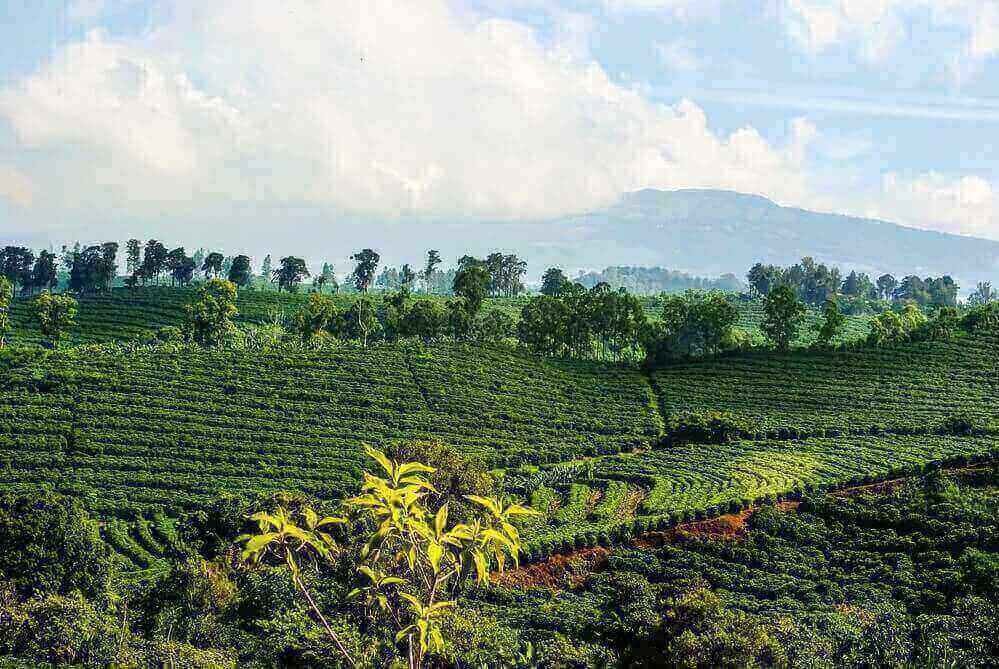
Costa Rica has a 2-century-long history of coffee production, but because of its small size, it’s never been a top producer. Most of its production was gobbled up by English coffee drinkers until World War II because of positive relations between the countries.
Costa Rican beans are considered some of the best in the world. The entire central valley of the country offers perfect conditions for high-grade, shade-grown coffee, along with portions of its neighbor Panama. It’s described as having a molassesy sweetness with fruity notes and perfect acidity.
16. Kenya
Kenya is known for its rich, volcanic highland soil which helps produce excellent-quality beans. Most coffee growers there are small landholders who belong to cooperatives that band together to process and export their beans.
Kenyan coffee tastes brighter and more acidic than coffee from neighboring Ethiopia.
17. Papua New Guinea
Coffee is Papua New Guinea‘s second-biggest export, after palm oil. Most of it is grown in very small plots, often less than 20 trees per farmer. It’s usually certified organic as most Papua New Guinea farmers still use ancient, traditional farming methods.
The coffee produced from these small ‘coffee gardens’ is described as smooth and notably sweet with a balanced body and acidity and a clean finish.
18. Tanzania
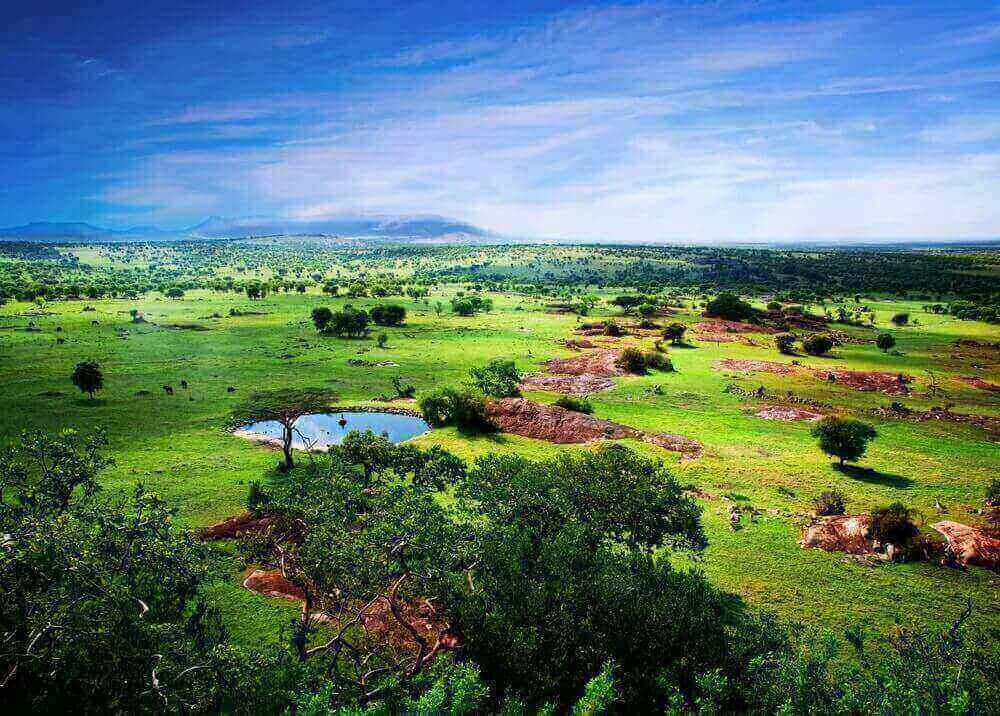
Coffee is Tanzania‘s largest export crop, containing about 70% Arabica and the remaining 30% Robusta. Nearly the entire Robusta crop is grown in the Kagera region in the northwestern corner of Tanzania, bordering Rwanda, Burundi, and Victoria Lake, while the Arabica crop is spread out over the rest of the country on small family farms.
Tanzanian coffee tends to be sweet, intense, and slightly creamy in flavor.
19. El Salvador
Coffee was a major export of El Salvador until the 1980s civil war, after which it dropped precipitously and has not recovered. Efforts are underway by the El Salvadorean government to revive the historically important industry, and production is growing at a steady clip.
Previously, El Salvador was one of the top coffee-producing regions in the world during the 19th and 20th Centuries. Its flavor profile is described as having a good body and high acidity. Some variants have a floral and spicy aroma.
20. Ecuador
Because of Ecuador‘s range of ecosystems, numerous different types of coffee varieties can be grown in the country. They produce both Arabica and Robusta beans in equal measure.
Ecuador‘s coffee beans are considered very high-quality but lesser-known than some of their neighbors in South America like Colombia and Peru. It’s considered to have a full-bodied fruity taste with floral notes.
The Last Word In Countries Coffee Production
If you enjoy coffee, you’ll probably find it interesting to sample coffee from different parts of the world and of different varietals.
If you want to try some unusual varieties, Caribbean coffee beans—those coming from Haiti, Cuba, or the Dominican Republic—are described as being smooth and sweet, while many lesser-known African varieties, such as those from Cameroon, Congo, Zimbabwe, and Madagascar tend to be more earthy in flavor, with a bit of spiciness to them.
Certain Asian varieties, like those from Laos, The Philippines, Thailand, and Timor. Once you start experimenting, you may find a favorite and never want to go back to your old standbys.
Don’t say we didn’t warn you!
FAQs About Countries Coffee Production
How many coffee-producing countries are there?
There are around 70 countries that grow and produce coffee, but not all of them export it as a commodity.
How many countries export coffee?
Only around 50 countries export their coffee to other nations.
What countries are the top coffee exporters?
Brazil is in the top spot, exporting 4 and a half billion U.S. dollars of coffee in 2019. Switzerland was next, exporting about 2 and a half billion U.S. dollars worth of coffee beans.

